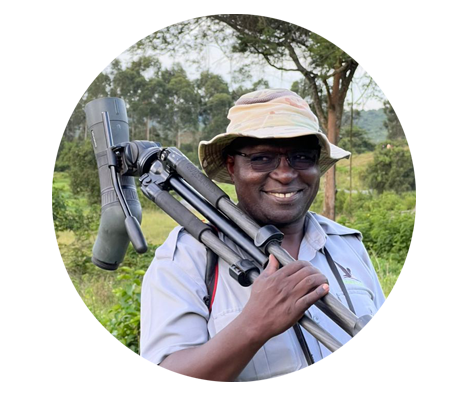Tour Overview
Uganda Birding Safari and wildlife tour will take you from the Swamps of Mabamba to look for the Shoebill, to the devil’s cauldron in Murchison falls National Park. From here, you will go West to the home of our closely related cousins, the Chimpanzee in Kibale National Park, then south to the home of the tree-climbing lions in Queen Elizabeth National Park. This shall be followed by penetrating the impenetrable forest of Bwindi that is home to the Mountain Gorilla and the Albertine rift endemics, which shall be climaxed by the low savannah plains of Lake Mburo National Park where special species like the Tabora Cisticola, and the Red-faced Barbet can be seen.
This Uganda birding Safari tour will take you to Murchison Falls National Park from the Swamps of Mabamba, where you may search for shoebills. From here, you will go to the west to Kibale National Park, the home of our distant relatives, the chimpanzee, and then south to Queen Elizabeth National Park, the habitat of the tree-climbing lions. The low savannah plains of Lake Mburo National Park, where rare species like the Tabora Cisticola and the Red-faced Barbet can be seen, will serve as the setting for the conclusion after entering the impenetrable forest of Bwindi, which is home to the Mountain Gorilla and the Albertine Rift Endemics.
Tour Highlights
Itinerary Details
Day-by-day
Day 1: Arrival Transfer for the 18 days Uganda birding
Day 2: Birding Mabamba Swamp and travelling to Murchison Falls National Park
Day 3–4: Birding, game drives, and an afternoon launch trip
Day 5: Transfer to Masindi
Day 6: Birding along the Royal Mile and Busingiro Sections of the Budongo
Day 7: Transfer to Kibale National Park
Day 8: Chimpanzee Tracking
Day 9: Travel to Queen Elizabeth National Park
Day 10: A game drive and an afternoon boat cruise on the Kazinga Channel
Day 11: Visit Bwindi Impenetrable National Park
Day 12: Mountain Gorilla Trekking
Day 13: Buhoma Village Walk
Day 14: Travel to Ruhija
Day 15: Mubwindi Swamp birding area
Day 16: Travel to Lake Mburo National Park
Day 17: The whole day Birding and wildlife viewing in the park
Day 18: Transfer to Entebbe Airport for your flight home

Chat with the expert
Our expert team is dedicated to crafting personalized safari experiences, drawing on years of firsthand knowledge to design a journey uniquely tailored to your interests and travel dreams
+256 (0) 777 912 938

